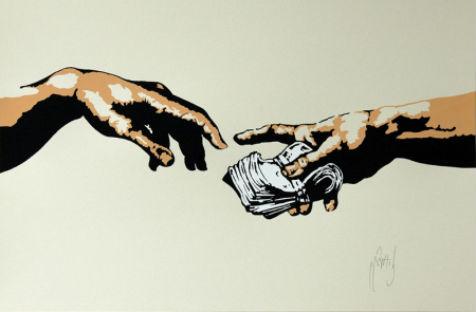Being creative has never been so potentially profitable. The creative industries are growing faster than the rest of the economy, generating income like never before. New social and demographic trends and globalisation combined with the fastest growth in technology this world has ever seen have created a market begging for new online arts ventures.
Creative entrepreneurs are attracting big sums in venture capital and the most successful are building multi-million dollar businesses on the back of creative thinkers.
Marc Worth describes himself as a ‘serial entrepreneur’. He is the founder of Worth Global Style Network (WGSN), which revolutionised fashion retail trends. Worth sold the company for £140 million in 2005 and went on to found Stylus Media Group in 2009. Stylus aims to inspire leaders within the creative industries by helping them understand the best ways to deliver their products to consumers. While not necessarily creative himself, his business is built on the shoulders of creative leaders in each of the fields his website covers.
The most important thing for Worth, when mentoring people just starting out in the industry, is to make sure you have the right product.
‘Is it a product looking for a market or a market looking for a product? Whatever the idea is. If it’s an idea looking for a market, you can forget it, it has to be answering the needs of the marketplace,’ he says.
Artists and creative people who want a share of Worth’s goldmine need to arm themselves with the right skills and climb over the perceived barrier that sits between creativity and the investment sector.
Artists are great at thinking outside the box, and such a skill is fundamental to the craft of entrepreneurship. Not only that, but established ecommerce entrepreneurs actively seek out creative people. Designers, writers, visual artists, craft makers are all needed to help create capital. Creativity is, in essence, a commodity.
Both Prosser and Lawrence were working in theatre and found that the systems available to them incredibly frustrating. There was no central place for people to put their information.
‘We found that we’re supposed to be a very collaborative industry but it was quite hard, there were no tools for us to actually be collaborative,’ says Prosser.
Venture capital recognised the profit potential of Stagebitz.The duo managed to score private investment of $890,000 and NIDA, Queensland University of Technology and Bell Shakespeare have already signed up. Stagebitz was also presented to the United States Institute for Theatre Technology (USITT) conference, with USITT Executive director, David Grindle seeing it as a game-changer for collaboration within the industry.
The interest in Stagebitz demonstrates that the arts is an untapped market for ecommerce, but you have to be prepared to convince investors who may be careful about dipping their toes into an industry that isn’t perceived as particularly lucrative.
‘I think one interesting thing from the point of view of getting funding is that it’s people who are professional investors and advisors and particularly tech start ups, they’re not used to thinking of the arts as a market at all because I suppose there is an assumption that there’s not much money in it or that people aren’t working as professionally as perhaps somebody in textiles or retail,’ says Prosser.
In the visual arts sector George Hartley has built Bluethumb, an arts-based business that has grown fivefold in a year. Hartley and his brother bought the start-up from two sisters who ran a Queensland art gallery and aim to do for visual arts what MySpace and SoundCloud had done with music.
Bluethumb enables visual artists to set up a profile and exhibit and sell their work. The response has been overwhelmingly positive and in a year that business has gone into profit and grown exponentially.
‘Our artists are our most important users, and we listen to everything they say. Most of our new features have come from their suggestions, and almost all of our growth in new artists has come from word of mouth, artists recommending us to other artists, and we’ve grown from 80 artists to pushing 500 in a bit over year,’ says Hartley.
Whether you are at the top echelons of the ecommerce arena like Worth, or starting out with a hugely promising start-up like Prosser and Hartley, there are endless opportunities for creative people in ecommerce.
It is so promising, in fact, that Queensland University of Technology launched the QUT Creative Enterprise Australia (CEA) Investment Fund last year.
‘I think that’s a fantastic innovation because it really recognises how much creativity and new thinking comes out of the creative industries and it doesn’t have to be all about what’s on stage or what’s being displayed in a gallery or whatever, it’s really about the creative processes that go on and the unique way we solve problems, so I think that’s a fantastic step forward,’ says Prosser.
If you would like to find out more about Bluetumb, which is hosting a pop up gallery this Sunday in Adelaide, visit www.bluethumb.com.au. For more information on Stagebitz go to http://stagebitz.com/.





